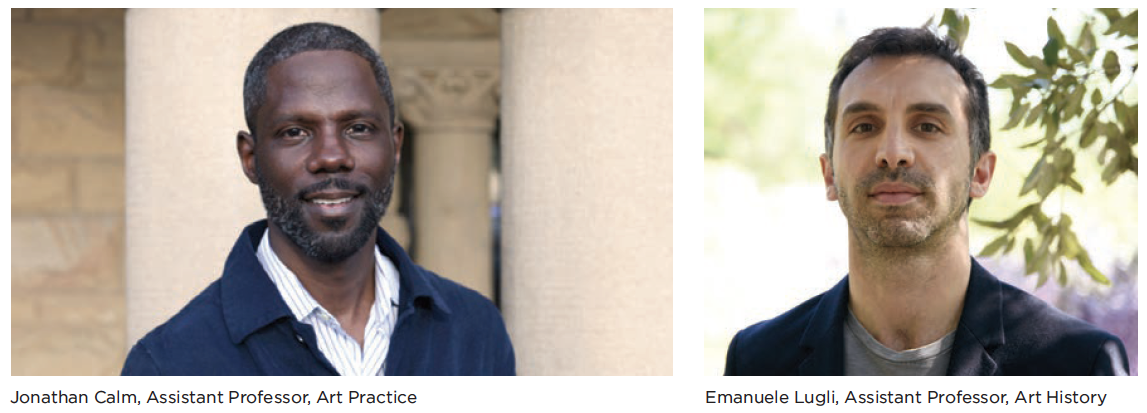By Laurie Lauletta-Boshart
This article was intended to appear in Fall 2020 Cantor magazine.
The concept of decolonization is not new, but the subject of resisting hegemony has recently found new energy in ongoing racial justice protests and equity conversations. I spoke with Jonathan Calm (JC), assistant professor of photography, and Emanuele Lugli (EL), assistant professor of art history, for their perspectives on current developments.
How would you define decolonization as it relates to museums?
JC: This is a conversation the art world began engaging in back in the 1970s and ’80s. Now, no different from then, museums are architectural structures that house collections of objects, but they are also power structures. The decolonization that needs to happen pertains to the viewpoints and attitudes of those who run museums, both in the public eye and behind the scenes—so, not just curators but also directors, board members, and donors.
From your perspective, what does it take to decolonize a museum?
EL: For me, the first thing is to realize that museums and artistries are products of colonization and power imbalances, so they cannot be decolonized. Collectors picked artworks that appealed to them and contributed to shaping narratives so that their collections have remained relevant over time. Once we realize that art history is not the mere narration of artistic facts but the very process of selection and exclusion of artworks—that is, the very place where power dynamics play—we have a different platform to start the discussion. I think a lot of people have this idea that artistries and museums can be neutral places—that somehow, they can be pure. I don’t think that’s the case.
How do you feel the process of decolonization is being applied at the Cantor Arts Center?
EL: The Cantor has inherited a problematic history because of the nature of its collections. It is important to make this very clear across all channels and to find productive ways to engage the public with these problems so that history is not repeated. I know that the Cantor is moving in that direction with, for instance, installations such as The Melancholy Museum, which I consider very moving and poetical.
JC: I am also particularly drawn to [The Melancholy Museum,] the Cantor’s reinstallation of the Stanford Family Collections, by artist Mark Dion. I believe it’s only been reinstalled twice before in the history of the museum, and it presents the most amazing and refreshing look at the collection. The collection is that of a young boy, Leland Stanford Jr., and includes everything from horses and stuffed birds to musical instruments and little toy carriages pulled by elephants. What Dion does is to recontextualize the process by which this collection was assembled and the museum was founded. As James Baldwin pointed out, there is something inherently childlike about the American mindset, which we find powerfully and ironically reflected here. Dion provides an in-depth history by reorganizing the collection for us, to make us aware of its ideological baseline. I believe this is a process in which we are able to think about what this museum is, so we can actually make informed and self-conscious future decisions about it.

